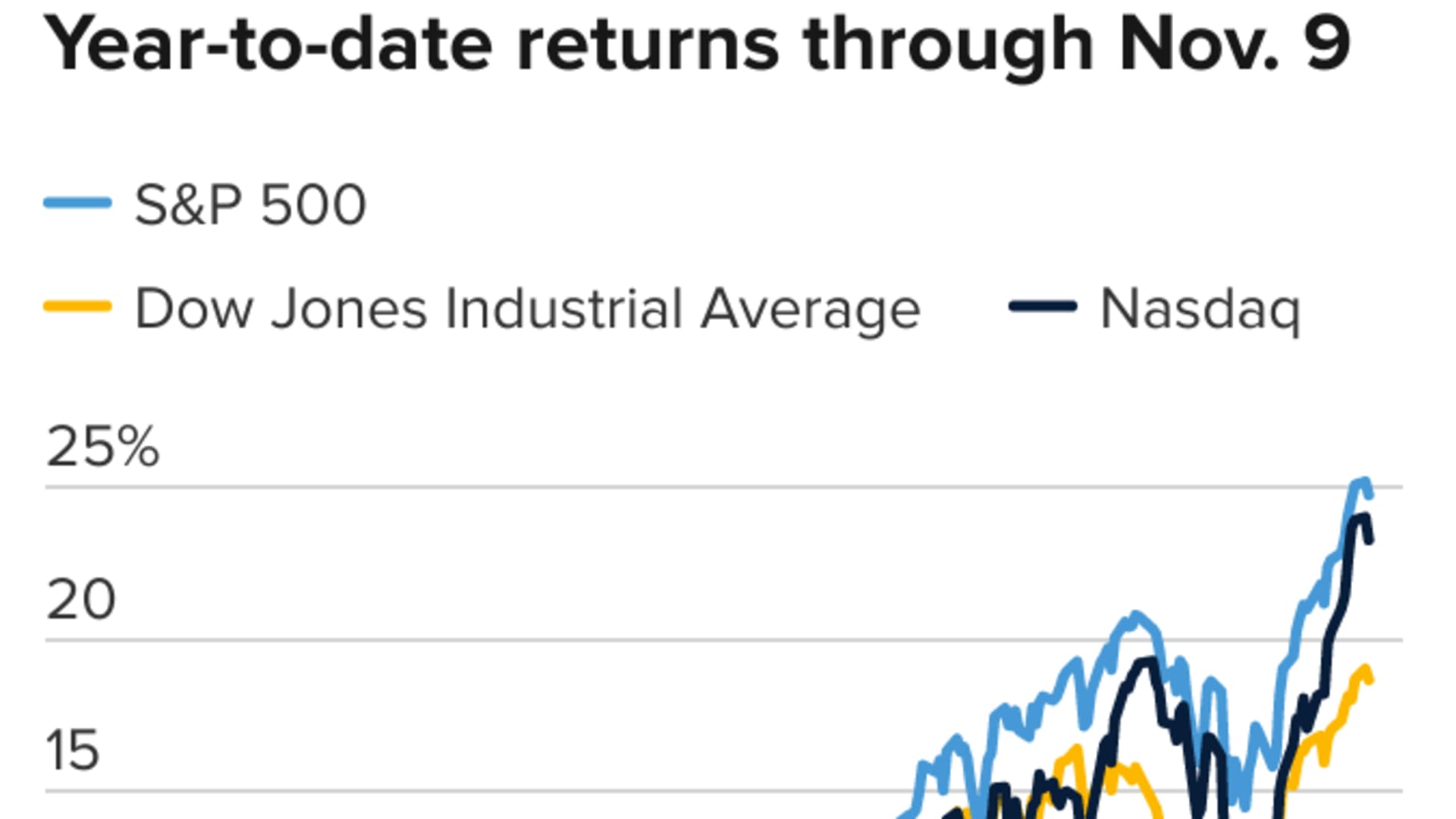
- It's been a spectacular year for the major indexes, which have been notching records with some regularity.
- Investors shouldn't be deterred from shopping for bargain names. Stocks in a wide range of industries have slipped over the course of the year and can present good opportunities.
- Review the stocks you’ve owned that have fallen, confirm their earnings growth is intact and be picky when making your purchases.
The market, regardless of which index we use – S&P 500, Dow or Nasdaq – keeps climbing and making new highs. With that type of trajectory, we might assume that there are no bargains around. True? No – that's false.

While it might seem logical to believe that every stock has participated in the relentless march upward, it's worth noting the action under the covers. As of Nov. 9, over 16%, or 82, of the stocks in the S&P, are at least 15% below the high they achieved in the first ten months of 2021. Fifty-three stocks, or over 10% of the entire index are 20% below their recent highs.
Get Philly local news, weather forecasts, sports and entertainment stories to your inbox. Sign up for NBC Philadelphia newsletters.
The table below illustrates this phenomenon, compiling all the stocks in the "fallen" category by industry sector in descending order of the average drop for its constituents.
For example, as of Nov. 9, the worst group is communications services (down 32.8%), which includes names such as Discovery (down 66%), ViacomCBS (down 65%) and several gaming stocks, including Penn National and Las Vegas Sands, that rallied hard on reopening enthusiasm only to slide as the Covid delta variant's virulence emerged.
The list of all the collapsing stocks includes a very wide range of industries. Tech names take the lead, with 17 companies down at least 15% from recent highs as of Nov. 9. That's followed by health care and consumer discretionary.
Money Report
Energy, real estate, and financials were the least affected, reflecting their status as the strongest sectors this year. Within the mix are companies such as Twitter, Intel, Moderna, Alaska Air (and most airlines), Clorox, Activision Blizzard, PayPal, and Kraft Heinz.
It's not unusual for 16% of S&P stocks to be down 15% from their current year high going into the last two months of the year. Looking at the past seven years, we find that the average "fallen" group holds 130 names. These numbers are skewed by a couple of years, such as 2020, when the market dropped 34% from late February to March, with many stocks never regaining their early-year status.
This year has been unique because of the shifting performance in growth and value stocks, which have altered the lead at least four times since January. (This lead has changed four times based on monthly cumulative data. Using daily cumulative data, this lead has changed 15 times.)
These moves have hit many stocks hard, once their group surrenders the lead after a sharp rally. Having lost momentum in an evolving leadership environment, does it make sense to review the list for potential buy ideas?
Examining how these depressed stocks act in the next 12 months is a useful exercise. The table below highlights the performance of those stocks down at least 15% in that year, and the price change for the following 12 months. Excluding 2019, the fallen stocks outperformed the S&P over the next year.
The right strategy might be to review stocks you have owned that are down considerably this year, confirm their earnings growth is intact, and make some selective purchases. The numbers are on your side.
Karen Firestone is chairman, CEO, and co-founder of Aureus Asset Management, an investment firm dedicated to providing contemporary asset management to families, individuals and institutions.






